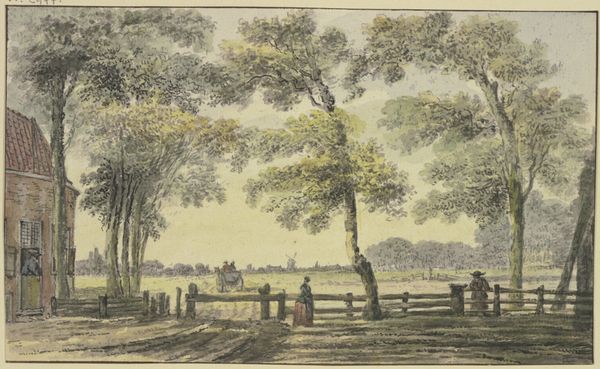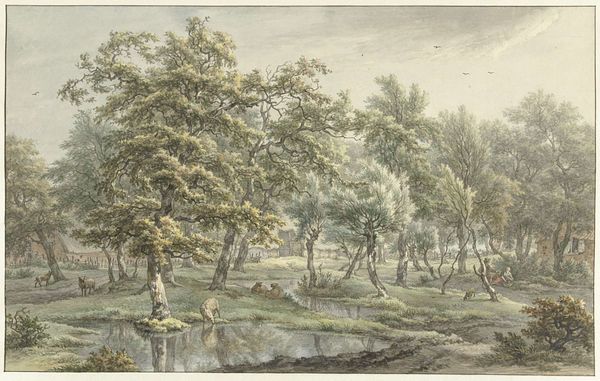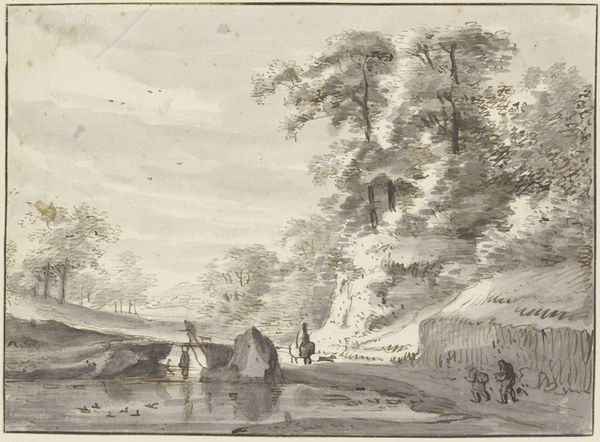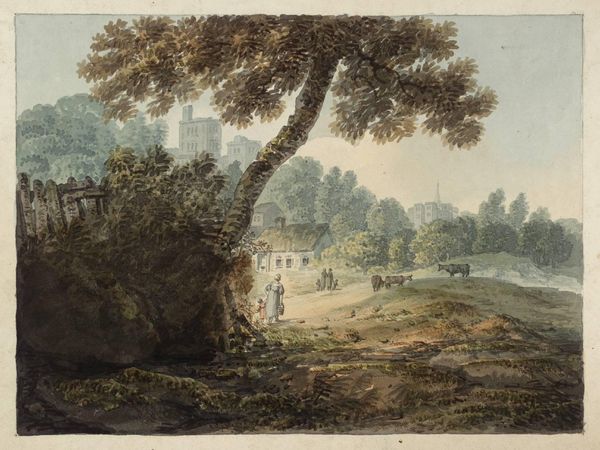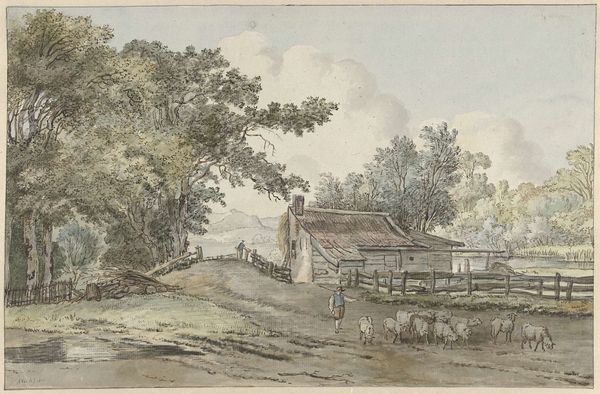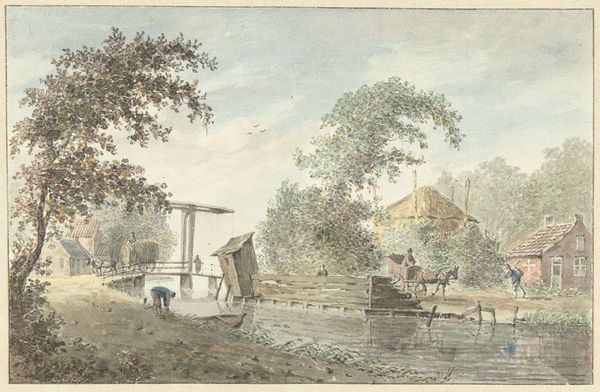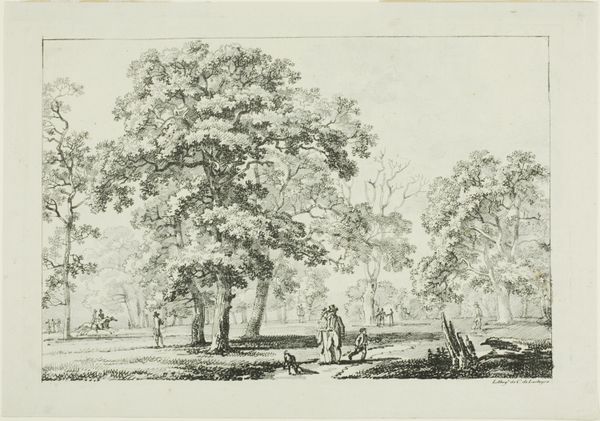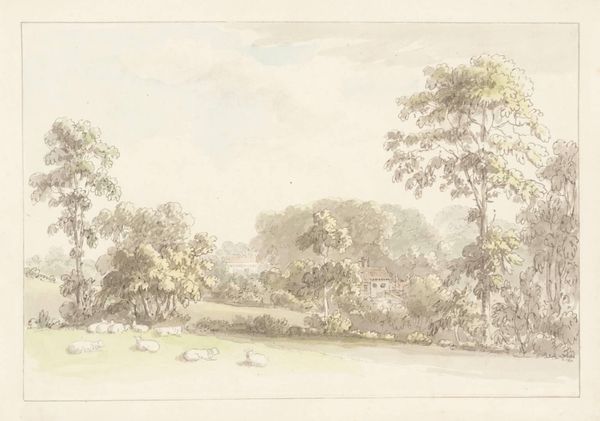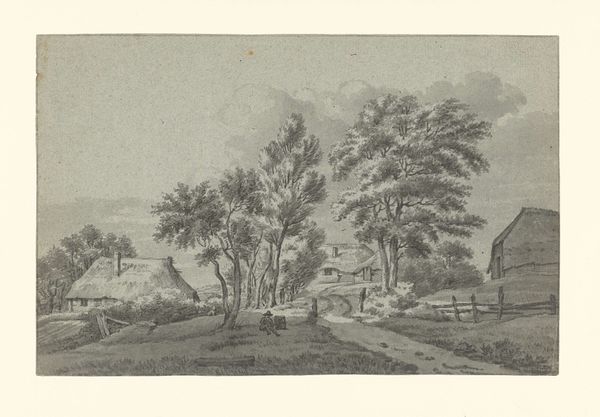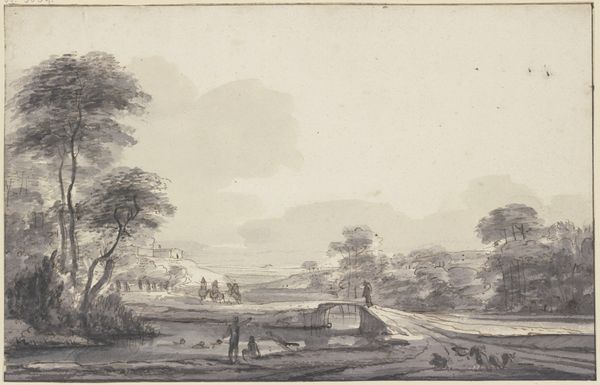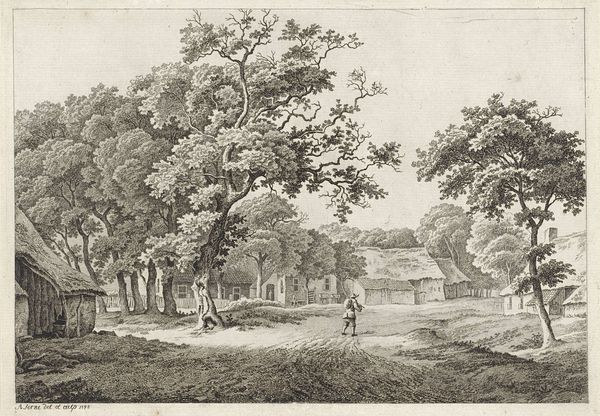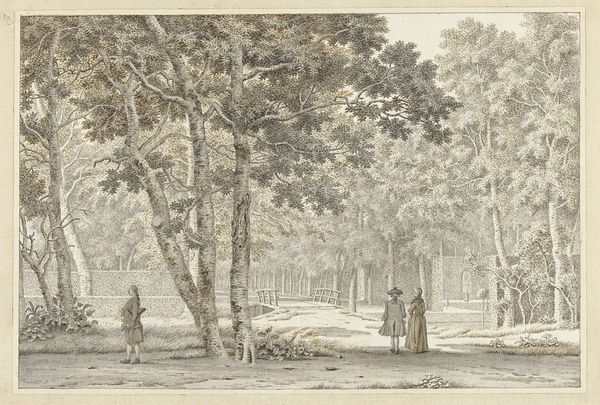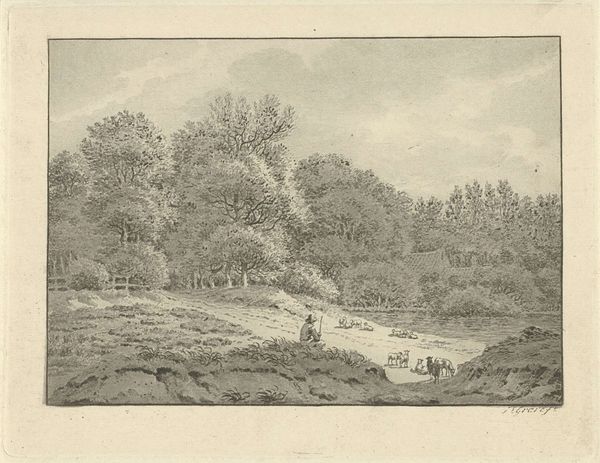
drawing, paper, watercolor, pencil
#
drawing
#
dutch-golden-age
#
landscape
#
paper
#
watercolor
#
pencil
#
watercolor
Dimensions: height 153 mm, width 231 mm
Copyright: Rijks Museum: Open Domain
Editor: Here we have Roelant Roghman's "Landscape with a Carriage in Front of a Farm," made somewhere between 1637 and 1692. It’s a drawing on paper, rendered in pencil and watercolor and part of the Rijksmuseum's collection. It feels almost monochromatic, with gentle greens and grays dominating the scene, creating a hazy, almost dreamlike atmosphere. What do you see in this piece? Curator: Oh, I’m immediately drawn to the quietness. It feels like a stolen moment. Roghman wasn’t necessarily trying to create a hyper-realistic depiction of the Dutch countryside. This has a gentler, more idealized feel to it, don't you think? It’s almost like a memory. Editor: Yes, there’s definitely a stillness to it. The figures are so small, dwarfed by the trees and the buildings. It’s a landscape that almost makes you feel like an intruder peeking into someone’s past. Curator: And the way he uses watercolor is particularly evocative. Notice how the colors seem to bleed into each other? That technique blurs the lines of reality just enough, inviting you to imagine, rather than just observe. What story could the landscape tell if these people could tell one, even now? What is going to happen next, there? It asks more than it tells, to my mind. Editor: I love how you phrased that, that it "asks more than it tells". So, Roghman is more interested in conveying a feeling or an experience than providing a factual depiction? Curator: Exactly. He gives you these suggestive hints, a horse-drawn wagon, distant figures...It makes us fill in the blanks with our own imaginings. What is it that attracts us about a watercolor drawing that doesn’t catch us in the same way about, say, an oil painting of a very similar scene? Editor: Hmmm, maybe its ephemeral quality? Curator: I agree, watercolor reminds us of water, after all, the element of fluidity, ephemerality. It's the opposite of permanence, yet here we are considering the piece centuries later! Editor: That's a lovely contradiction. This image made me think, and now think even more. Thank you. Curator: My pleasure. Perhaps on our next walkthrough, we can dive deeper into the techniques Roghman would have learned!
Comments
No comments
Be the first to comment and join the conversation on the ultimate creative platform.
